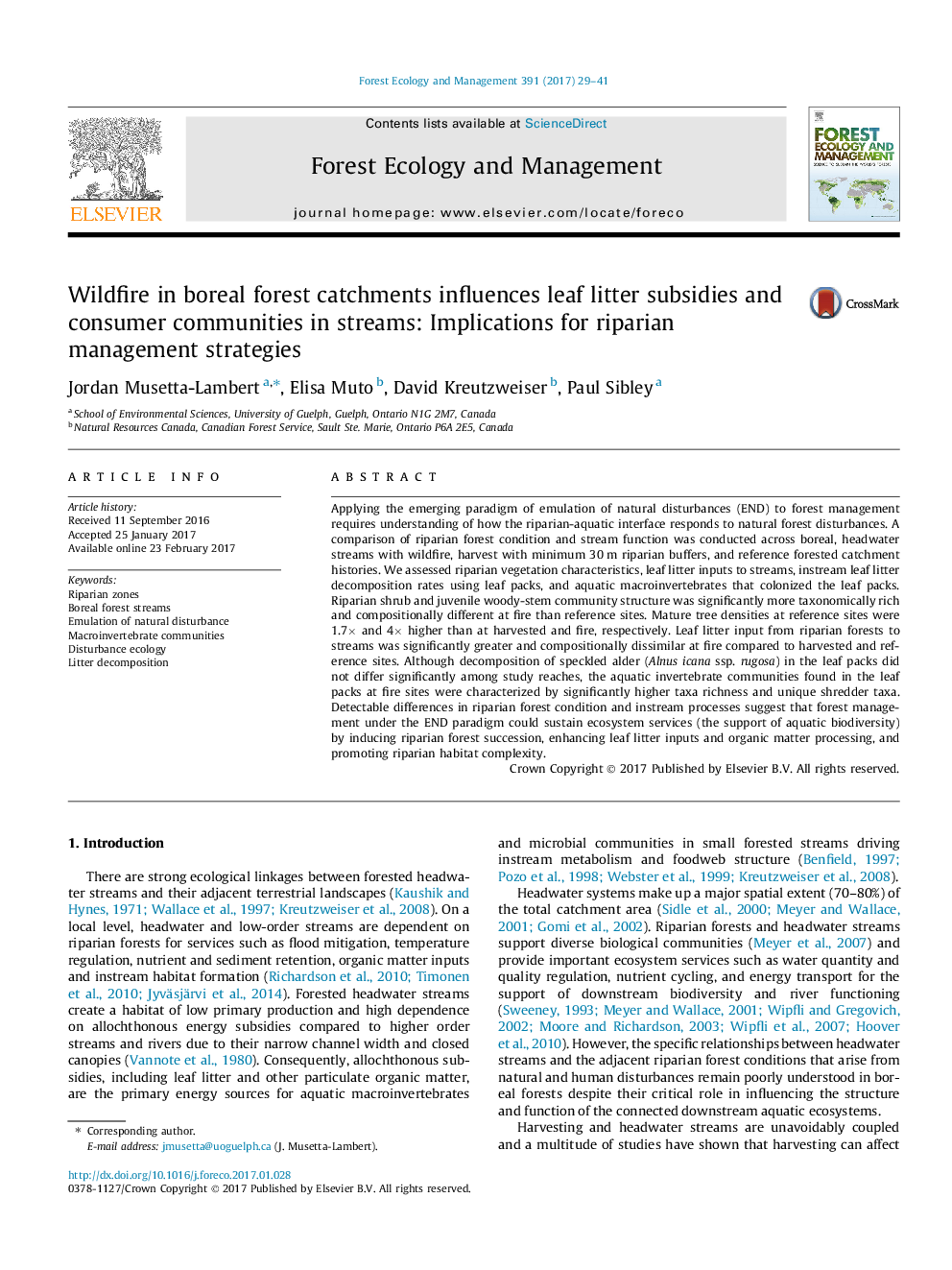| Article ID | Journal | Published Year | Pages | File Type |
|---|---|---|---|---|
| 6459390 | Forest Ecology and Management | 2017 | 13 Pages |
â¢Structure and function of riparian-stream interactions across forest disturbances.â¢Wildfire, harvested, and reference boreal forest catchments were assessed.â¢Higher taxa richness of shrubs and juvenile woody-stem species at fire sites.â¢Allochthonous leaf litter was greater and compositionally different at fire sites.â¢A unique macroinvertebrate community driven by shredders was found at fires sites.
Applying the emerging paradigm of emulation of natural disturbances (END) to forest management requires understanding of how the riparian-aquatic interface responds to natural forest disturbances. A comparison of riparian forest condition and stream function was conducted across boreal, headwater streams with wildfire, harvest with minimum 30Â m riparian buffers, and reference forested catchment histories. We assessed riparian vegetation characteristics, leaf litter inputs to streams, instream leaf litter decomposition rates using leaf packs, and aquatic macroinvertebrates that colonized the leaf packs. Riparian shrub and juvenile woody-stem community structure was significantly more taxonomically rich and compositionally different at fire than reference sites. Mature tree densities at reference sites were 1.7Ã and 4Ã higher than at harvested and fire, respectively. Leaf litter input from riparian forests to streams was significantly greater and compositionally dissimilar at fire compared to harvested and reference sites. Although decomposition of speckled alder (Alnus icana ssp. rugosa) in the leaf packs did not differ significantly among study reaches, the aquatic invertebrate communities found in the leaf packs at fire sites were characterized by significantly higher taxa richness and unique shredder taxa. Detectable differences in riparian forest condition and instream processes suggest that forest management under the END paradigm could sustain ecosystem services (the support of aquatic biodiversity) by inducing riparian forest succession, enhancing leaf litter inputs and organic matter processing, and promoting riparian habitat complexity.
